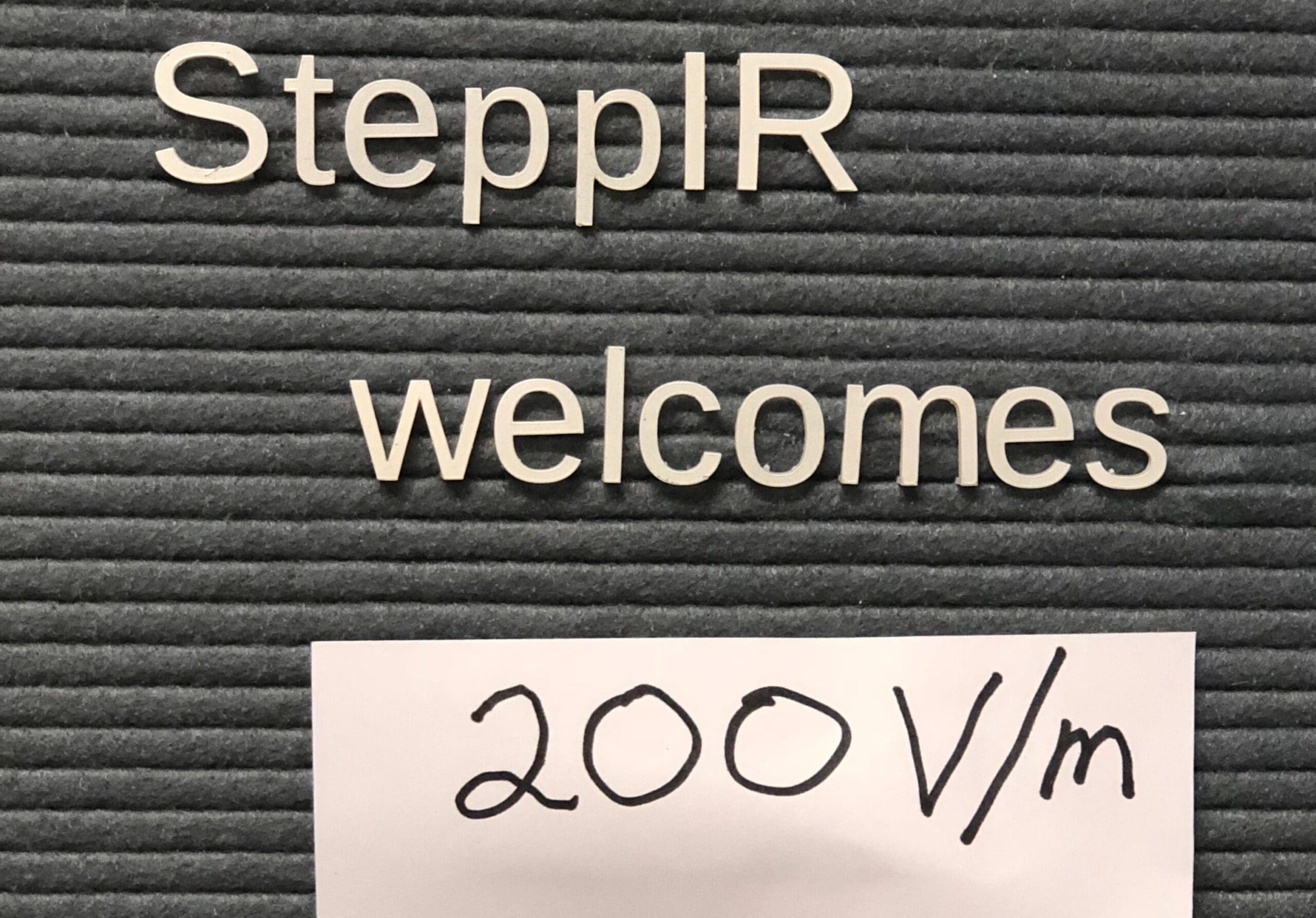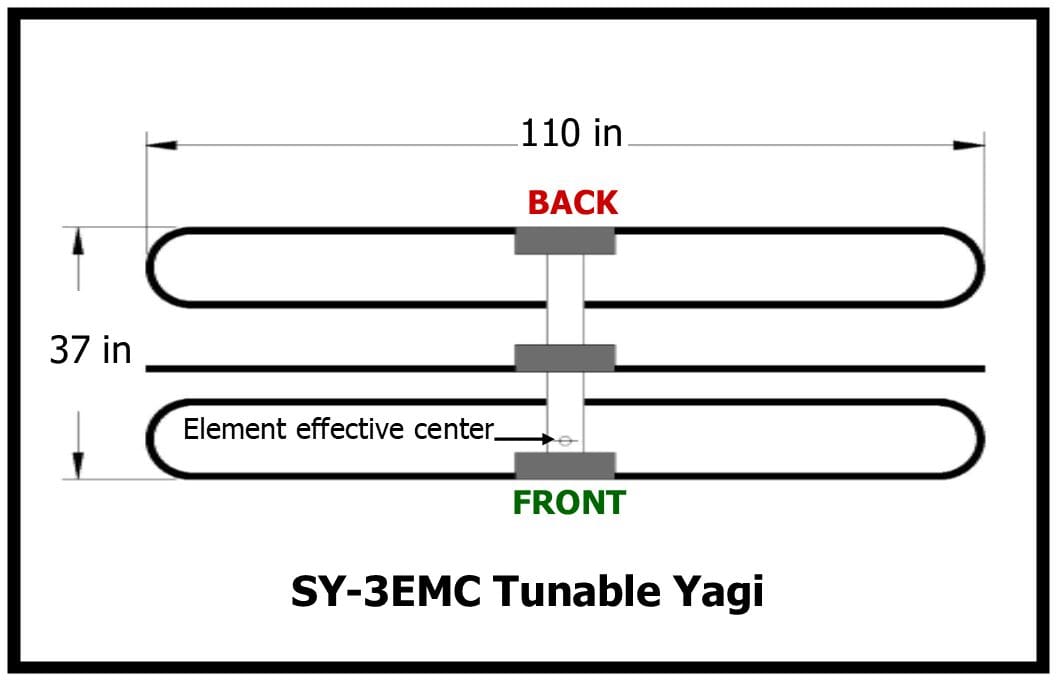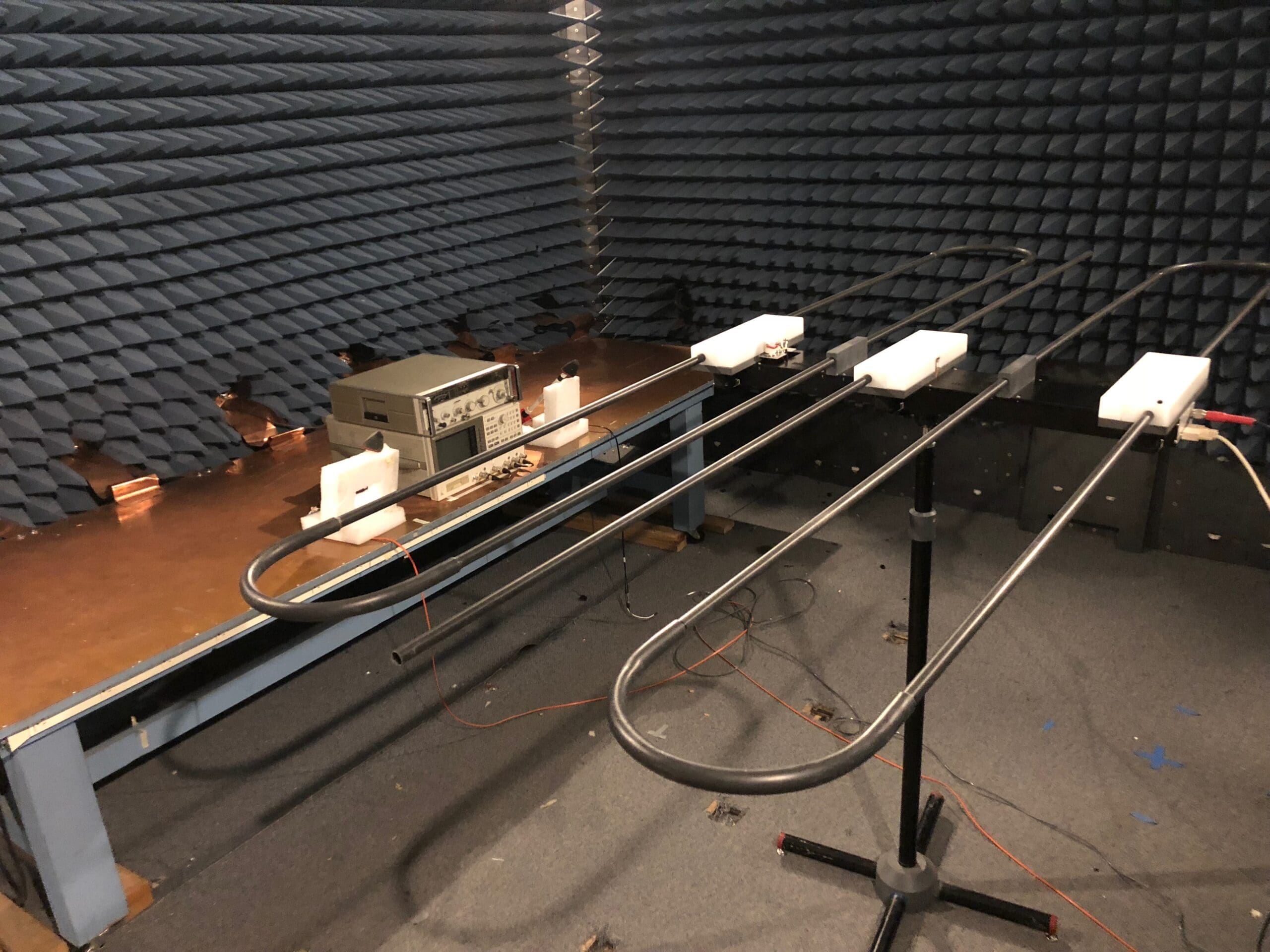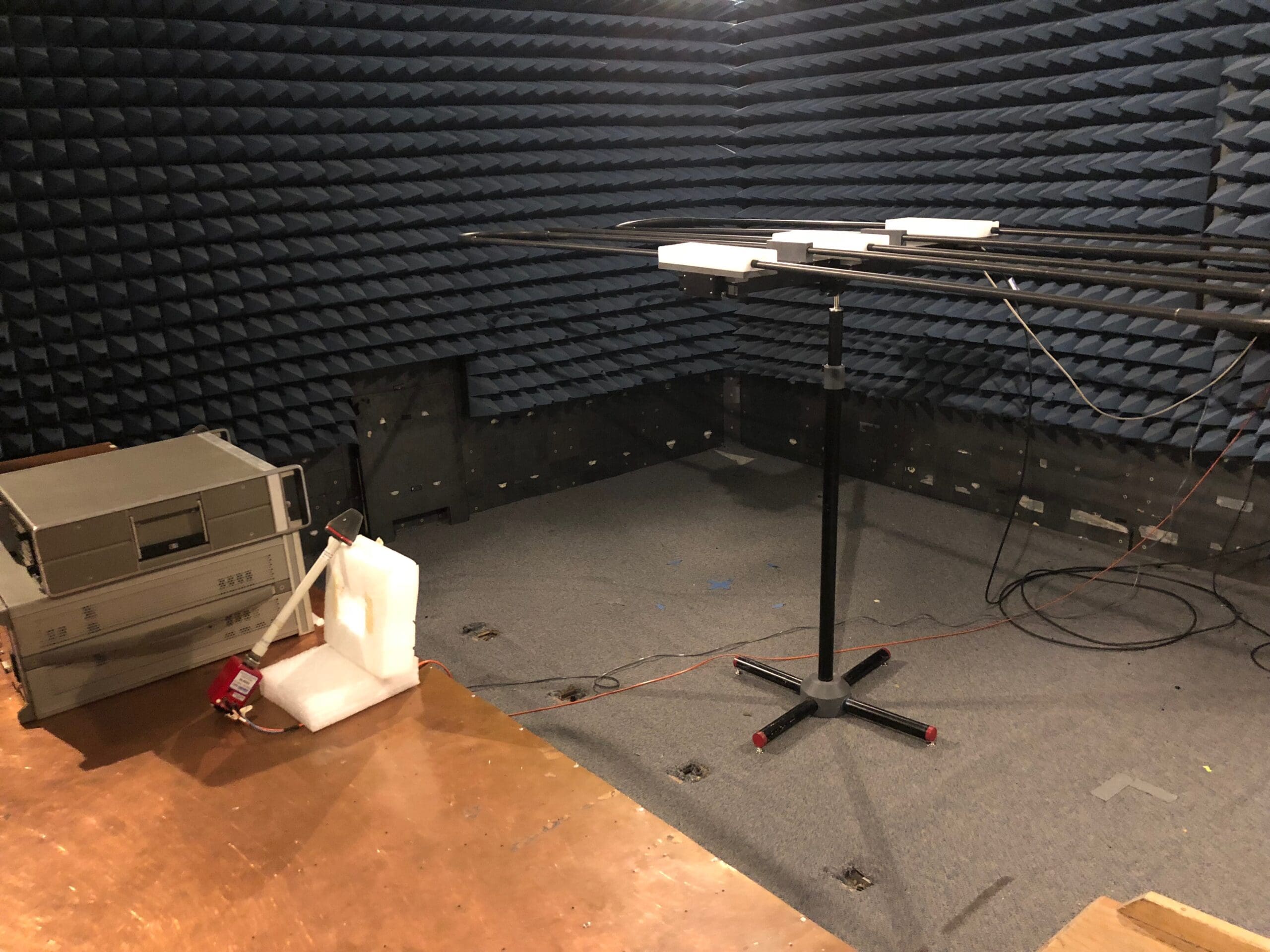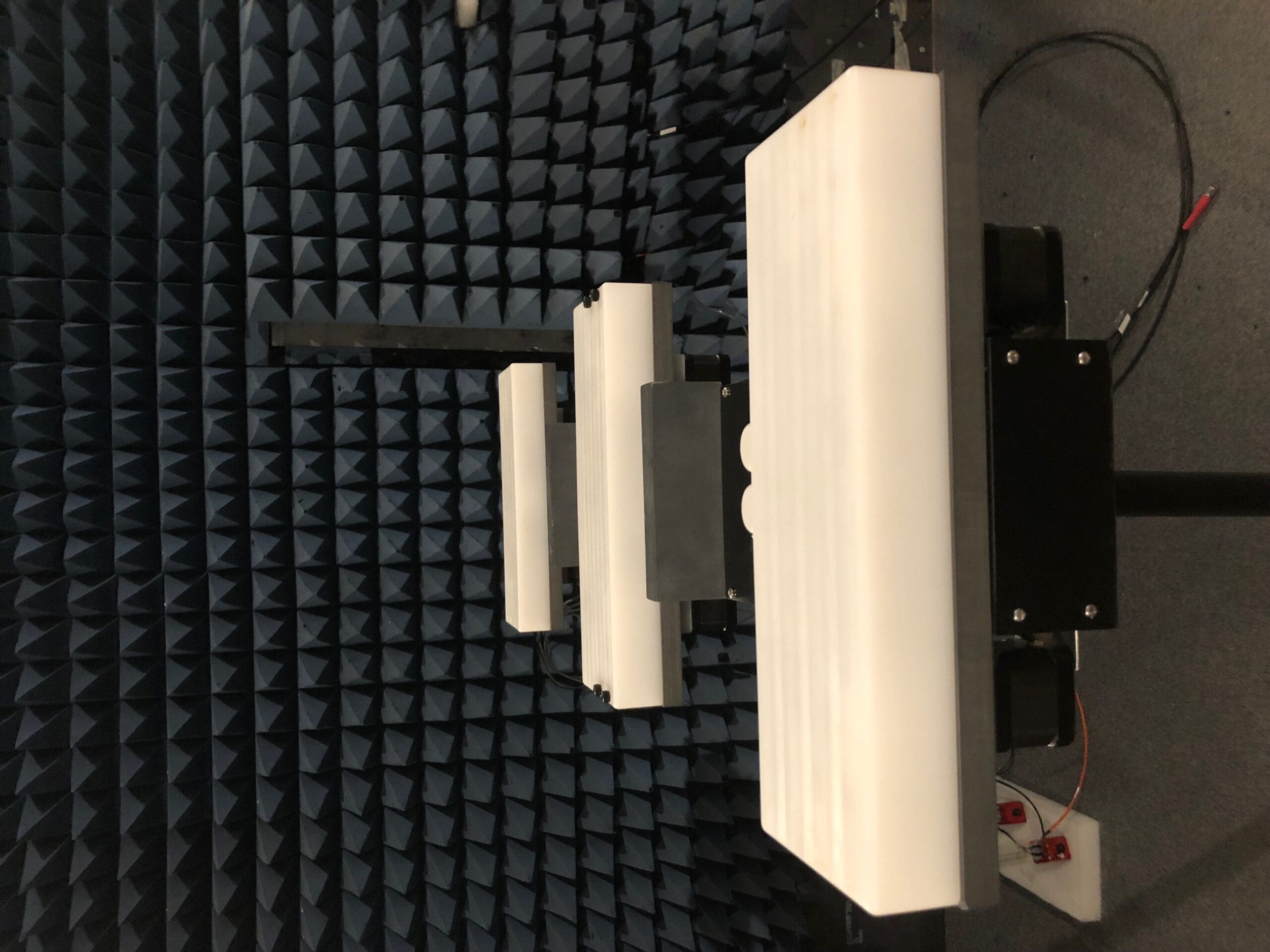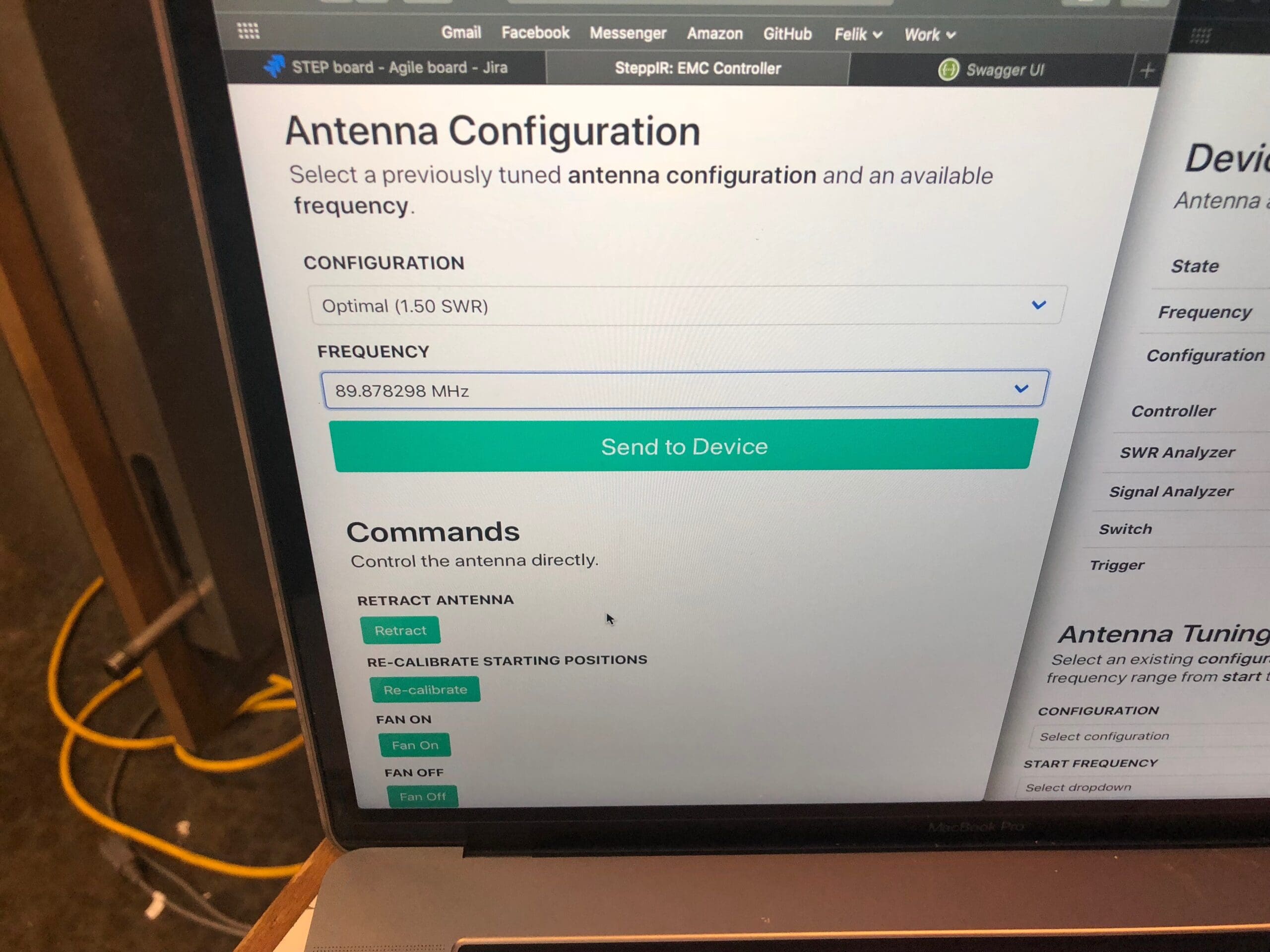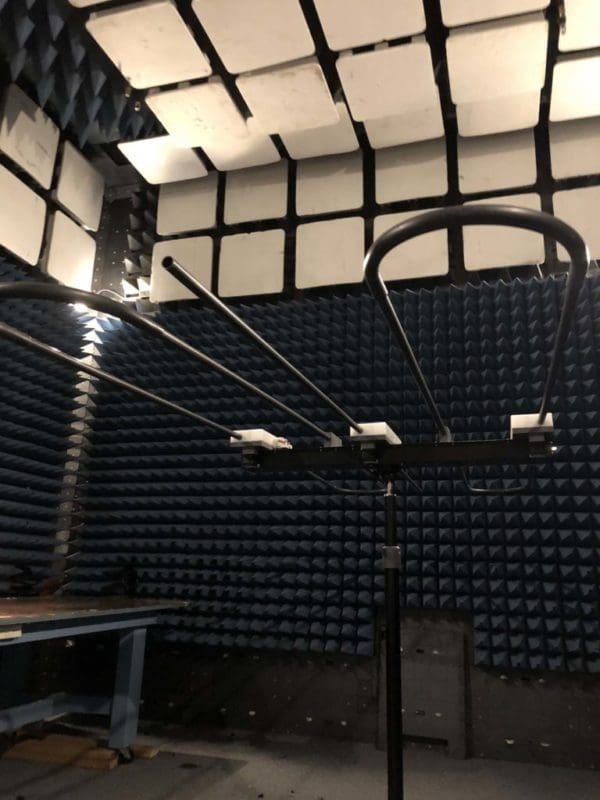
The New Standard for MIL-STD-461G 30-200MHz
MIL-STD-461F was introduced to address the deficiencies of previous RF-susceptibility standards and thus made it extremely difficult – and nearly impossible from 30-120 MHz -to achieve successful EMC testing using existing antenna technologies. Prior tests were conducted using antennas of dubious performance capabilities, and shortfalls in reaching the RF field were sometimes overcome by utilizing methods that would render the test results as incompatible with the specification.
The OptimizIR AI system is a patented, software defined and mechanically optimized antenna – because the antenna is resonant on all frequencies within its range, the SWR is typically 1.75:1. The system is High-Q, has very high efficiency, a wide beamwidth and thus, excellent harmonic rejection – all of which help make RF susceptibility testing with the OptimizIR AI to the current specifications of MIL-STD-461 RS 103 -a significant reality.
OptimizIR AI PRINCIPLE OF OPERATION
The OptimizIR AI is a tunable antenna system that allows precise mechanical control of each of the element lengths – the driven element and respective parasitic elements are each adjusted to their individual, optimized lengths for each frequency in the test – both horizontal and vertical polarization.. This allows very broad frequency coverage with a single antenna while maintaining ideal performance characteristics. This technology is especially useful in the case of dipole antennas (Yagis, Log-Periodics and Biconical antennas) because they are all essentially single frequency devices. This means that for a fixed length version of any of these antenna types, the designer must choose an optimal frequency to “cut” the antenna to be resonant on. As the RF source tunes away from that single optimized frequency, the antenna will quickly suffer from performance degradation. There are methods to “trick” the RF source into thinking that the antenna is resonant, but it comes at steep cost in performance. With the OptimizIR AI, having the ability to automatically adjust the antenna to the exact length required, also allows operation in less-than-ideal locations- such as EMI chambers where room effects seriously detune antennas in the 30MHz to 120 MHz range.
The basic antenna element consists of two reels of perforated copper-beryllium strip that are driven by a micro-processor-controlled stepper motor, which allows very precise control of the length of the copper-beryllium element. Power is delivered to each of the copper-beryllium conductors via a specially designed mechanical brush that is rated for 2.5 KW. The system incorporates a patented fold-back technique that reduces the physical footprint of the antenna by 40% while decreasing gain by only 0.3 dB. This unique element design also keeps the high voltages at the tips away from structural surfaces, thus minimizing E-Field pattern distortion and maintaining a very high return loss.
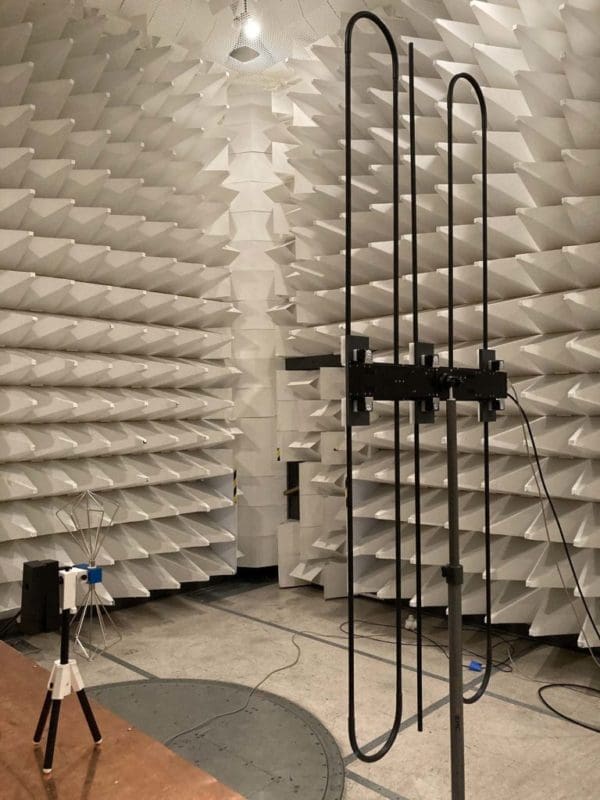
Auto-Tuned, Turnkey System – Introducing the OptimizIR AI
The OptimizIR AI auto-tune system is a patented software algorithm that interacts with our proprietary analytics tower to create resonant, optimized antennas for each of the required frequencies for MIL-STD-461G. The antenna is tuned in both the horizontal and vertical polarizations before testing begins – these tunes are saved to memory and are very repeatable. No outside equipment is required for the initial tuning of the system. Once the tune is completed, the user connects the OtpimizIR’s antenna coaxial cable to the RF source, and testing can begin- all equipment normally utilized by the user remains the same as with any test (signal generator, field probes, software etc.). Our system seamlessly interfaces with a specific, industry-leading software system (call for more information) or can be configured to work with any proprietary software by utilizing our development website. Through the software interface, the OptimizIR AI listens for frequency changes and will automatically change frequencies when the RF source does.


